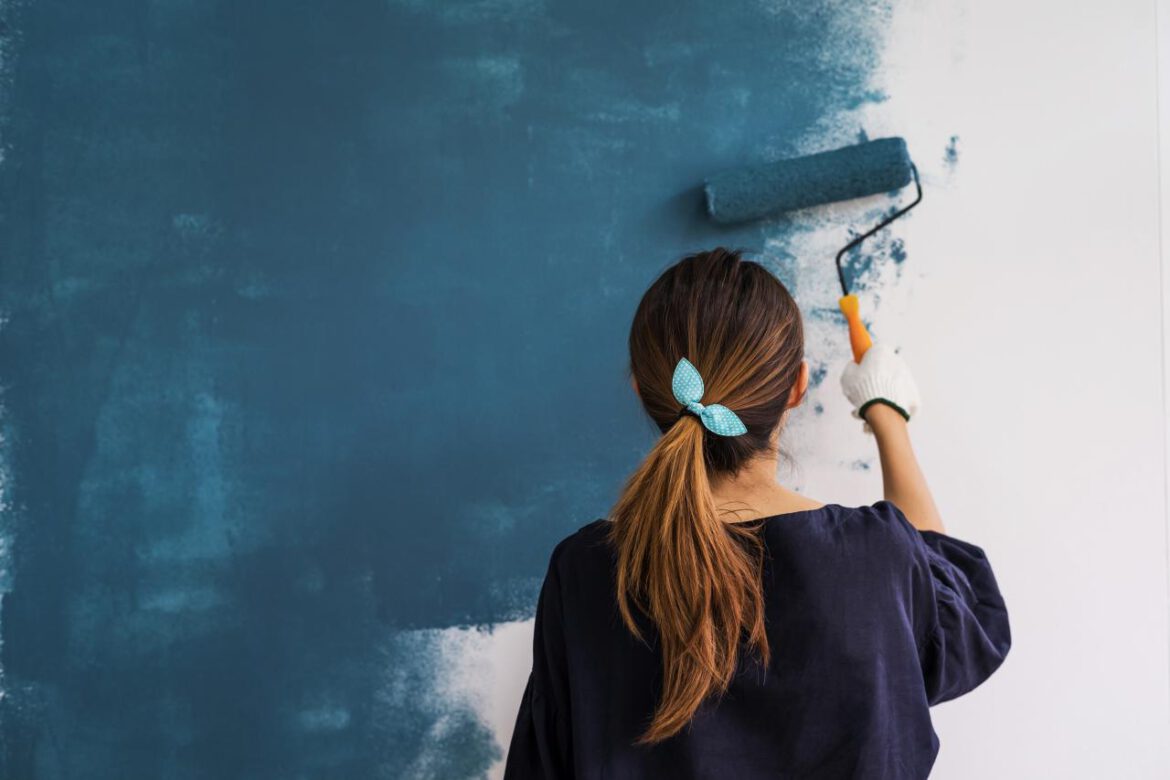Interior painting is an important aspect of home improvement. However, there are several things that you should consider before you start the project. It will make it a lot easier to get started and avoid costly mistakes. Read on Painters to learn more.
If you’re in the process of updating your home, you’ll want to choose the right paint finishes for the job. There are several different types of finishes to choose from, each one with its own advantages and disadvantages. You’ll also want to consider the room’s intended use.
High-gloss paints offer a shine that is perfect for adding a touch of elegance to your interior. These paints are easy to clean and can even handle daily scrubbing. They provide a glossy finish that mirrors the look of plastic or enamel.
Matte finishes don’t reflect as much light as gloss or semi-gloss, but they’re easier to clean and hide many surface imperfections. They’re ideal for rooms with low traffic and surfaces with less-than-ideal texture. They aren’t recommended for busy areas, though.
Satin is another popular choice. These paints offer a soft velvety finish that works well in indoor and outdoor spots. They’re also resistant to mildew. They can be tricky to touch up, however.
Flat paint is another option. It’s typically used in interior walls and ceilings. They have no shine and a slightly chalky appearance. They’re not suitable for bathrooms or children’s rooms.
These are the most common paint finishes. They’re made from latex, oil, or water-based materials. They’re available in a variety of sheens, so you can get a finish that matches the style of your room.
When choosing a paint finish, you’ll need to take into account the area’s traffic, humidity, and other factors. In addition, you’ll need to consider the finish’s durability. For example, if you have doors or cabinets that will be repeatedly contacted, you’ll want to opt for a shinier finish.
The cost of painting an interior of a house can vary widely. It depends on the size of the home and the amount of labor needed. Painters will also charge for additional work, such as repairing walls.
For example, a painter might charge $50 for a half-bath of 20 square feet. On the other hand, a full-house interior might cost $1500. A painter may charge less for a high-end project, such as a new mural, or more for a specialty job, such as painting woodwork.
Costs for painting a house vary due to the size of the room and the type of paint used. Most paint jobs require two coats. An average bedroom is about 132 square feet. However, a kitchen is much larger. If the kitchen has a backsplash, cabinets, or appliances, the painting cost will increase.
The price of painting a ceiling can range from a little over a cent per square foot to more than a dollar per square foot. If the ceiling is textured, it will require more paint to cover the surface area.
Adding texture to the wall is another factor that can raise the cost of painting. This will add an extra $0.50 to $1.00 per square foot, depending on the amount of trim involved. It is usually cheaper to paint the trim rather than the walls.
For an average-sized master bathroom of 70 square feet, the painting cost will range from $350 to $650. For a small bathroom of 50 square feet, the paint cost will be between $50 and $150. The cost of painting an entryway or a hallway, which gets heavy foot traffic, can cost $300 to $1,000.
Interior painting is an excellent way to increase the value of your home. Besides improving the appearance, you can also change the ambiance of a room. However, there are many factors to consider before you begin a paint job.
First, you should consider the cost. It’s a good idea to contact your realtor to find out if it will be worthwhile to renovate your home. If you do decide to go ahead, you will want to prepare your home for the new paint job.
Getting your walls ready before you start can help save you time and effort later. A professional painter will know how to best prep your space.
The standard prep for an interior painting job includes cleaning, patching, and caulking windows, doors, and baseboards. It also involves sanding rough surfaces. The painter may tape off some areas, which will save you from having to do it yourself.
In order to get the best results, you’ll want to remove any soft furnishings from the room. This will allow you to clean the walls, which can be achieved by using an appropriate cleaner.



